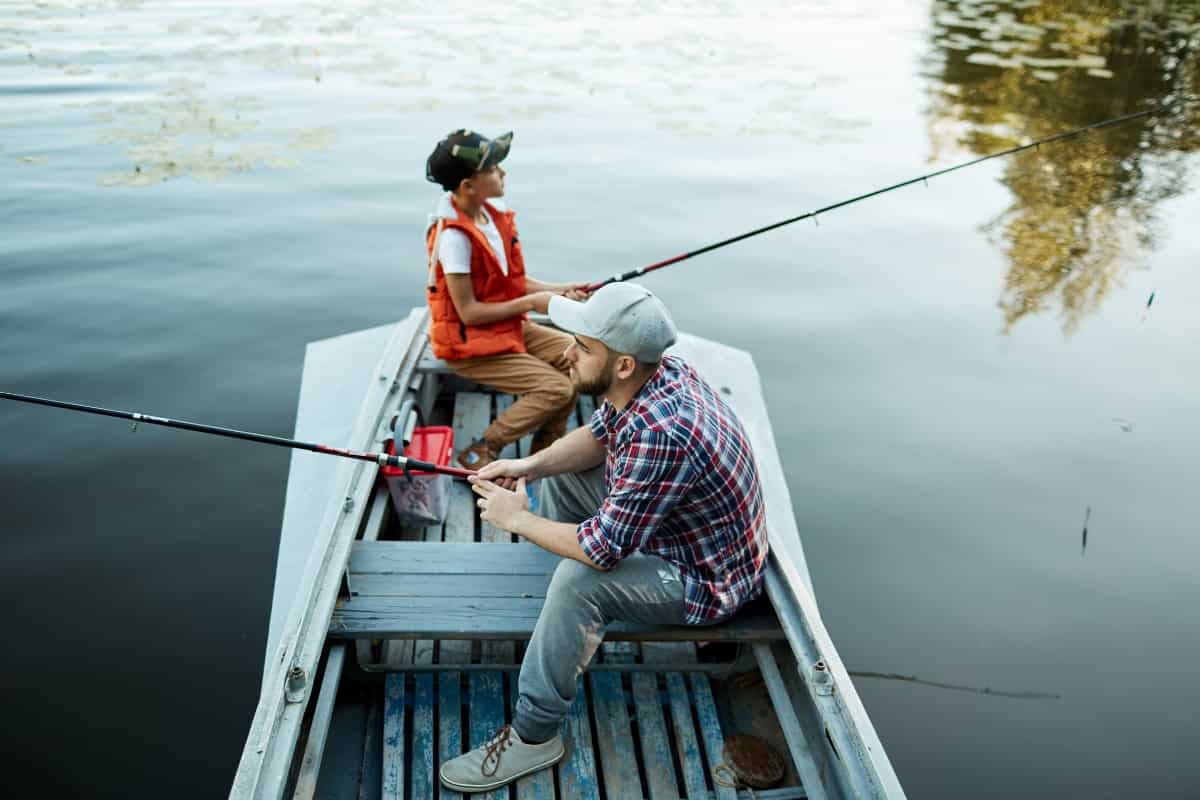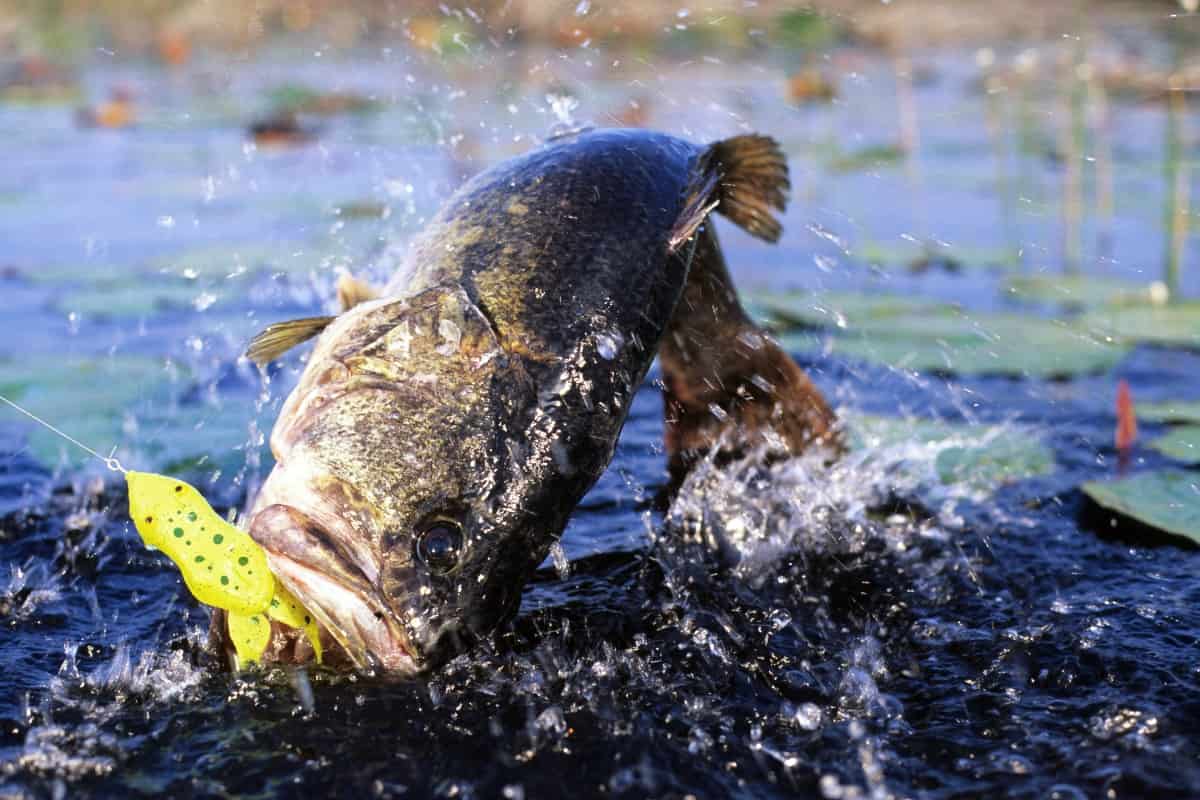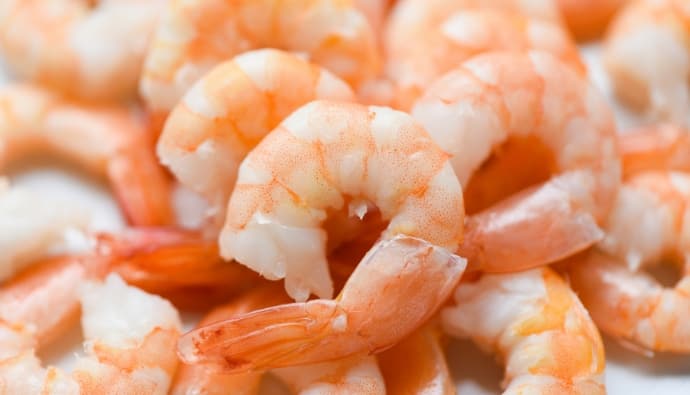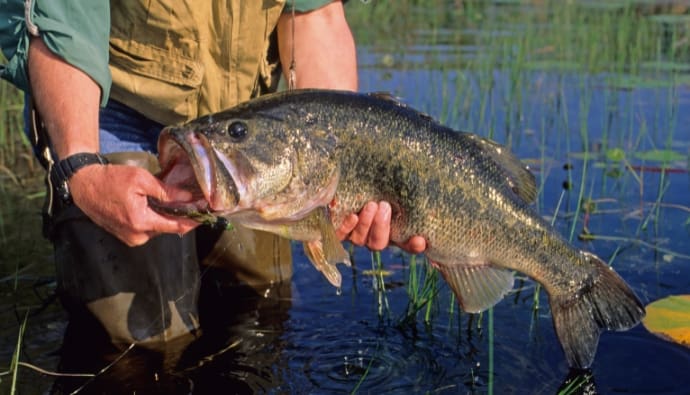Trolling is an often underutilized technique when angling for striped bass. Often referred to as a novices game, one of the misconceptions about trolling is that it requires little skill or technique. This is inaccurate, but it perpetuates a lie around one of the most effective ways to angle for striped bass.
Trolling is one of the most productive ways to bring in big striped bass. Novice and veteran fishers should incorporate this technique to maximize their chances of bringing in a trophy.
Far from boring, trolling transitions fishing from a waiting game to a hunt.
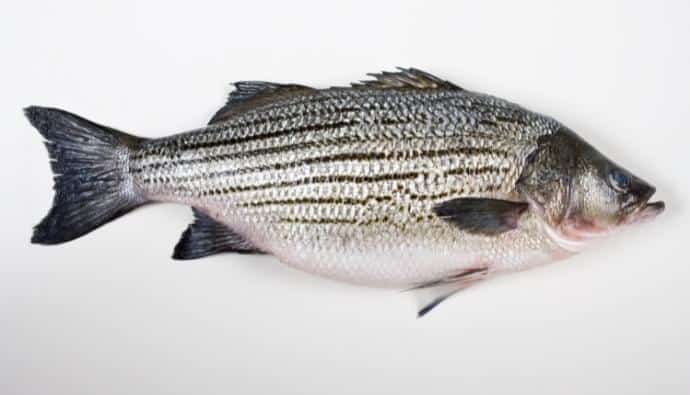
Where to Troll
Trolling occurs in open water as anglers attempt to find striped bass. The intent is to locate schools of the targeted fish or structure around which they may be hiding. Objects such as rocks, reefs, stumps, and other landmarks are excellent places to find stripers.
Anglers that do their homework and record drop-offs, bottom contours, or other geographic features on the bottom will have more success trolling pasty spots than simply working their way across a body of water.
Because striped bass is opportunistic predators, they will congregate in areas that provide easily ambushed prey. Food sources for baitfish are an excellent place to throw past.
Rocks, muscle beds, reefs, shorelines, boulders, and drop-offs are all perfect places to troll as they may harbor smaller fish that find themselves in the striped bass’s food chain.
Gear
When trolling for striper, shorter rods work best. There will be a significant amount of movement from both the trolling and the lure’s action underwater, so longer rods will often move too much.
To mitigate the movement, shorter rods provide a more rigid and stable platform from the back of the boat while maintaining enough turgor to set the hook when a bass takes it.
When trolling for striped bass, anglers should use conventional reels spooled with lead core braid or wire lines. The wire can be difficult for novices to use; the weight of this line can maintain the lower inside of the strike zone.
A 6-foot leader of 50 lbs monofilament should sit between the plug and the line. Split rings on the plug with a snap swivel attached to the main line allow for realistic movement with the current from the pin.
Setting the drag properly is one of the critical components to successfully hooking a fish during trolling. The drag pressure sitting around 9 to 10 pounds is excellent for setting the hook on a first bite.
Trolling Techniques and Tactics
With more tactics than Sun Tzu, the art of war, there are a variety of techniques to maximize effectiveness when trolling for striped bass.
The troll with the current is the easiest way to keep lures at their desired deaths without them coming to the surface or creating ski effects. Slow to moderate speeds keep the interests within the strike zone and keep them in a similar path to any natural bat moving through the area.
Slow and Steady
Don’t let the misnomer of the term bass fool you. Unlike their ferocious green cousins, striped bass prefers consistent, moving lures through their water column at low speed. The slower the boat goes, the lower the bait can drop.
In and Out of Gear
Cycling in and out of gear can change the depth minimally within the water column to effectively move the bait in front of schools of striped bass. To effectively perform this technique, there are several steps.
- Find a target: Large structure pieces on the fishfinder or schools of fish make the perfect target. Identify these on the fishfinder, wait several seconds, and then drop out of gear.
- Waiting game: A ten count is equivalent to 10 feet of drop from the lure. When indeed against the tide, the lures may sink deeper. The intent is that the interests will sync to wherever the structure or school of a fish lies.
- Back in gear: Once the lures reach the intended depth, put the boat back in gear. This is often when the strikes occur.
- Rinse and repeat: If this technique is unsuccessful after the first couple of tries, vary the time cycle. Placed the reel into the free spool and let out some line to simulate a spooked fish.
Tackle
The most effective lure when trolling for striped bass is deep-diving plugs. Effective from spring through fall, the deep-diving minnow plugs work their magic throughout the water column, conjuring up monsters in the current.
Depending on the time of year, anglers may wish to switch their plugs up to match the available food sources and meet the current diet of the striped bass.
There are a handful of solid lures anglers should keep as staples in their tackle box. However, there is one lure that beats them all out.
Rapala X Wrap Magnum
Trolling year-round, the Rapala X Wrap Magnum works like magic.
This deep-diving minnow can run up to 13 knots with its translucent textured body covering its internal holographic foil. With 3D eyes and Perma steel hooks, this lure has a little problem trolling from 10 to 30 feet down and bringing in the hungriest fish.
Another excellent deep-diving plug is the Bomber Lures Certified Depth Saltwater Grade Fishing Lure.
Excelling out to deaths of 25 to 30 feet, this durable Lord can withstand everything aggressive Stryper can throw at it. Puncture resistant, with an 8-inch frame, this 4-ounce lower is all business and perfect for trolling for Striped Bass.
Anglers after quality, not quantity, should look at using a Tony Maja Bunker Spoon. Known for bringing in some of the most significant trophy Striped Bass, this heavy-duty saltwater spoon comprises stainless steel, and extra heavy gauge, allowing it to maintain performance at impressive depths.
With a more subtle action than many of its relatives, this spoon puts off life-like swimming action irresistible to striped bass.
Trolling gets a bad rep in the angling space. Though often looked at as a copout or a lazy way to angle, it is one of the most effective ways to track down and catch striped bass.
With the right equipment and incorporating proper technique, anglers can bring home plenty of sizeable striped bass without playing the waiting game many are so familiar with.
Selecting the right places to troll, paying attention to the fishfinder, and working the current can be the difference between a good day on the water and an empty ice chest. As always, good luck and stay safe on the water.

 Facebook
Facebook YouTube
YouTube
